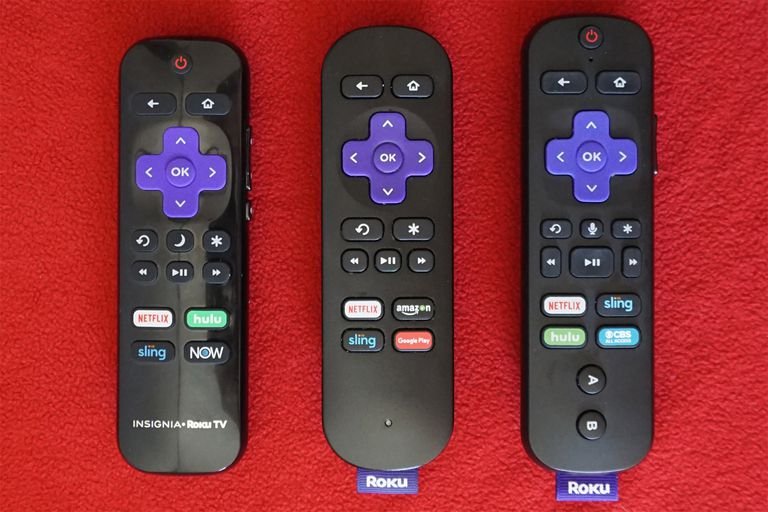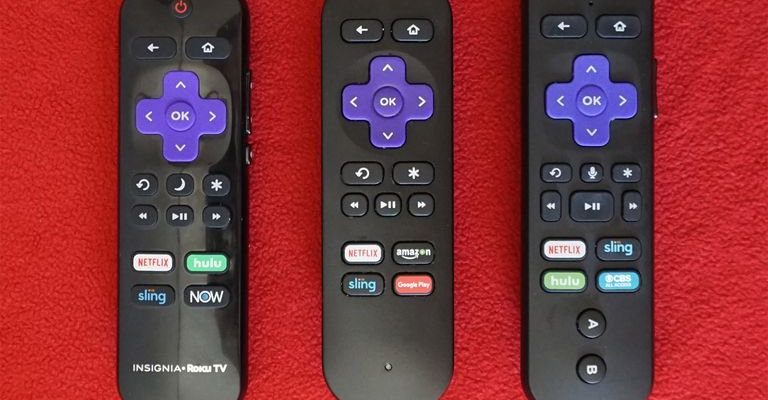
I remember when my parents upgraded to streaming. Remote confusion was real in our house. My dad would say, “Which clicker do I use for Netflix?” By the time he found the right one, his coffee went cold. Honestly, life got a lot simpler when I helped them set up their Roku remote to control both the Roku and the TV. It was almost like giving them a magic wand—wave it once, and everything just works. Let me walk you through how this all plays out, and what you need to know to make your Roku remote the hero of your living room.
What Makes Roku Remotes Special Anyway?
Before we jump into syncing and setting up, it’s worth talking about what makes a Roku remote different from your dusty old TV controller. Most Roku remotes—the “Enhanced” or “Voice” types, not the simple infrared ones—use wireless signals (not just those old-school invisible red blips). This means you don’t have to point them perfectly at the device. You could be three cushions deep in the couch, and it’ll still work.
But here’s the thing: newer Roku remotes are designed to do more than just pause a show or scroll through apps. They often come with special *power* and *volume* buttons, and some even have a mute button. Those little extras open the door for controlling more than just your streaming. Suddenly, one remote can fire up your TV, adjust the sound, and get your favorite series rolling without a scavenger hunt for the TV remote. If your Roku remote has these buttons, it’s the magic kind!
Pro-tip: If your Roku remote is missing volume or power buttons, it’s probably the old-school basic model. Upgrading might be worth it if you want to control multiple devices.
Understanding How Roku Remotes Control Multiple Devices
You might be wondering, “How exactly does the Roku remote talk to my TV or other devices?” Here’s the scoop: Enhanced Roku remotes use a combo of wireless tech for the Roku itself, and infrared (IR) or HDMI-CEC signals for your TV or sound system. Think of it like the remote sending secret handshakes: one kind for Roku, another for your TV.
When you set things up, the Roku remote “learns” how to send the right IR signal for your TV’s brand, letting it handle volume, mute, and power. Meanwhile, through a feature called HDMI-CEC (Consumer Electronics Control), the Roku can sometimes wake up or turn off other devices connected via HDMI—like soundbars or AV receivers.
Here’s a tiny real-life moment: my friend Sarah has a TCL Roku TV (where the Roku brain is built in). Her remote turns the TV and soundbar on together, with just one click. It feels natural—like one remote was always meant to do it all.
How To Pair Your Roku Remote With Your TV’s Controls
Let me explain, step by step, how to get your Roku remote to handle your TV’s power and volume. No tech degree needed. Most of this magic happens during the initial Roku streaming device setup, but you can do it anytime.
- First, make sure you’re using an Enhanced Roku remote—the one with power and volume buttons.
- Head to your Roku home screen and open Settings.
- Scroll down to Remotes & devices, then choose Remotes.
- Select your remote, then tap on Set up remote for TV control.
Now, just follow the prompts. The Roku device will try to detect your TV brand automatically. It’ll ask if you hear music or sound when it tests the volume. Just answer honestly—no need to fib! If it doesn’t get it right the first try, it’ll run through a few “codes” until it hits the right one.
This process is a lot like trying different keys on a keyring until one unlocks your door. Once you find the code that works, your Roku remote will now be able to turn your TV on and off, change the volume, or mute everything in one press.
Pairing With Other Devices: Soundbars, Receivers, and More
Now for the fun part: some folks have a more complex setup. Maybe you’ve got a soundbar, or your audio runs through a fancy receiver. Can the Roku remote handle those, too? The answer: sometimes yes, sometimes no.
Here’s the deal: If your soundbar or receiver supports HDMI-CEC and is connected to your TV via HDMI, your Roku remote can send signals through the TV to control sound.
If your TV is set up properly (often called “CEC control” or “Anynet+” on Samsung, “Bravia Sync” on Sony, etc.), the volume and mute buttons on your Roku remote may control the soundbar instead of the TV speakers, automatically. It’s like having a universal translator—the volume button just works, no matter which speaker is doing the talking.
But sometimes, you need to dig into your TV’s settings and make sure CEC is enabled. And remember, not all soundbars or receivers play nice with this feature. If you’re not hearing audio changes, double-check cables, settings, and that your devices are CEC compatible.
What To Do If The Roku Remote Won’t Sync or Pair
So, you followed all the steps, but the remote just isn’t cooperating. Don’t panic! Troubleshooting a Roku remote is something everyone faces, even the pros at the electronics store.
- Batteries: Start by swapping in fresh batteries. It sounds obvious, but dead juice is the
- Re-pairing: Sometimes the remote loses its mind and needs to be reset. Open the remote battery compartment and look for a tiny button. Hold that down (usually for 5 seconds) until the light starts flashing, then follow the prompts on your Roku.
- Restart Everything: Unplug your Roku device and TV for about a minute, plug them back in, and try again.
- Check For Interference: If your Roku remote uses IR, make sure nothing’s blocking the path between the remote and the device. No stacks of magazines or houseplants in the way!
If you’re still stuck, check if your remote is compatible with your Roku model. Not all remotes work with all devices—sometimes you really do need to check the fine print.
Comparing Roku Remotes to Universal Remotes
Maybe you’re asking yourself, “Why not just get a universal remote?” Good question. Universal remotes can handle all sorts of gadgets: TV, cable box, DVD, even the ceiling fan (seriously, some do!). They often work by programming in specific codes for each device. But here’s the catch: universals can be a pain to set up, especially for streaming devices.
Roku’s own remotes, especially the Enhanced or Voice versions, are tailor-made for the Roku streaming device. Setup is usually way easier, and you get the bonus of special Roku features, like voice search or channel shortcuts. Universal remotes might work for everything, but they don’t always play nice with proprietary Roku controls.
That said, if you’ve got way more than TV and soundbar in your living room—think Blu-ray, retro gaming consoles, or a cable box—a universal remote *might* be your best friend. But for most people? The Roku remote, set up right, handles the major stuff and keeps life simple.
Tips To Make The Most Of Your Roku Remote
Here’s something I wish someone had told me when I first got a Roku: the remote has a few hidden tricks. For example, some models have a headphone jack for private listening (no more waking up the neighbors if you binge at midnight!). Others let you program personal shortcut buttons—super handy for jumping straight into Netflix or Disney+.
If you have a habit of losing remotes (who doesn’t?), newer Roku models have a remote finder feature. Press a button on the Roku device itself, and your remote will start beeping like it’s begging to be found.
And don’t forget about the Roku mobile app. Your phone can double as a backup remote, complete with voice search and a keyboard for easy typing. That’s especially useful if you ever *truly* lose the physical remote or the battery dies right in the middle of movie night.
When To Reset or Replace Your Roku Remote
After years of heavy use (or… accidental drops behind the couch), some remotes just bite the dust. If the buttons stop responding, it gets glitchy, or the pairing just won’t work after troubleshooting, it’s time to consider a reset or a new remote.
- To reset: Remove the batteries, unplug your Roku device, wait a minute, then plug everything back and re-insert batteries.
- To replace: Head to Roku’s website or your favorite electronics store. Make sure you grab one compatible with your model and streaming device.
Don’t toss the old one straight away! Sometimes, a deep reset and new batteries bring it back to life. But if you do upgrade, you might enjoy extra features like voice control or a remote finder.
Bringing It All Together: Roku Remote = Less Chaos
So, back to that original pile of remotes on your coffee table—wouldn’t it feel amazing to toss out a couple and just use one for almost everything? By setting up your Roku streaming device remote the right way, you can control your TV, soundbar, and of course, all your favorite streaming content. Sure, it might not handle every single gadget in your living room (universal remotes are still out there if you need them), but for most people, it covers all the basics and then some.
Honestly, the little effort it takes to sync, pair, and sometimes reset your Roku remote is worth the huge lift in daily convenience. Next movie night, you’ll only need to reach for one remote—so your popcorn stays warm, and your coffee never goes cold.
